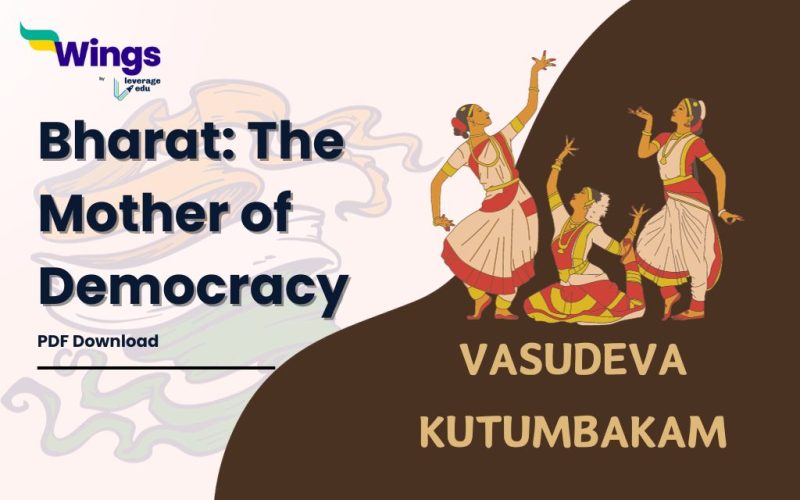Bharat, popularly known as India, has a historical background of approximately 9000 years with its rich cultural and traditional heritage. During the recently concluded G20 Summit in India, the Ministry of Culture, Government of India organised an exhibition named, ‘Bharat: The Mother of Democracy,’ to display the tradition of democracy in India.
In the wake of the G20 Summit, where leaders and delegates from all the member states represented their nations, India highlighted its traditional values to them. You might be curious to know about Bharat and why India is considered the mother of Democracy. Let’s find out.
Bharat is the Oldest Democracy
You might be wondering why Bharat or India is the oldest democracy. Were there humans in India thousands of years ago? Were they civilized? etc. In legends like the Ramayana and Mahabharata, there are references to a King chosen by his people, who has only one responsibility; working for the prosperity of his kingdom and its people. Although the term given to these leaders is ‘King’ buts it’s not the same as those in the Western world.
Kings in ancient India were driven by the principles of dharma. According to the shastras, the society was divided into 4 jatis: Brahmana, Kshatriya, Vaishya and Shudra. The ruling class was Kshatrias who used to take approval from their cabinet ministers to select the next hier of the crown. For example in the Ramayan, the old King of Ayodhya, Dashratha ought approval of his council of ministers and people’s representatives. This is quite similar to what happens in today’s democracy.
Click here to learn more about Bharat the mother of democracy pdf download.
The Ramayan is a living guide where the example of an ideal government is mentioned; Lord Rama. In Ram-Rajya, there is only peace and prosperity where people are working for the welfare of the society and the society for them.
Cultural Developments in Bharat
Over the centuries, India has faced several cultural developments, from being an ancient kingdom to the medieval sultanates, from a British colony to a Sovereign state. India is the birthplace of some of the major religions in the world; Hinduism, Sikhism, Jainism, etc. and they are all collectively known as Indian religions.
Over the years, several styles of art, painting, architecture, music, dance, festivals and customs have evolved in India and this variety has made the Indian culture unparalleled in the entire world. The cultural heritage of India still thrives maintaining its original features together along with changes, a fundamental indicator of its strength.
Must Read: Bharat: The Mother of Democracy Portal; Know All About It
FAQs
A. According to archaeologists, India has a historical background of approximately 9000 years. Some archaeologists are of the opinion that agricultural practices in the Indus Valley Civilization started some 7000 years ago.
A. Before 1947, the entire Indus Valley Civilization was in India. After the partition of India, half of this age-old civilization is in Pakistan and the other half in the Indian states of Gujarat, Rajasthan, Punjab, Haryana and Jammu.
A. The Mesopotamian civilization is the oldest civilization in the world. The other civilizations which were established later on were the Egyptian civilization, the Indus Valley civilization and the Chinese civilization.
For more information about such informative topics, visit our trending events page and make sure to follow Leverage Edu.
 One app for all your study abroad needs
One app for all your study abroad needs













